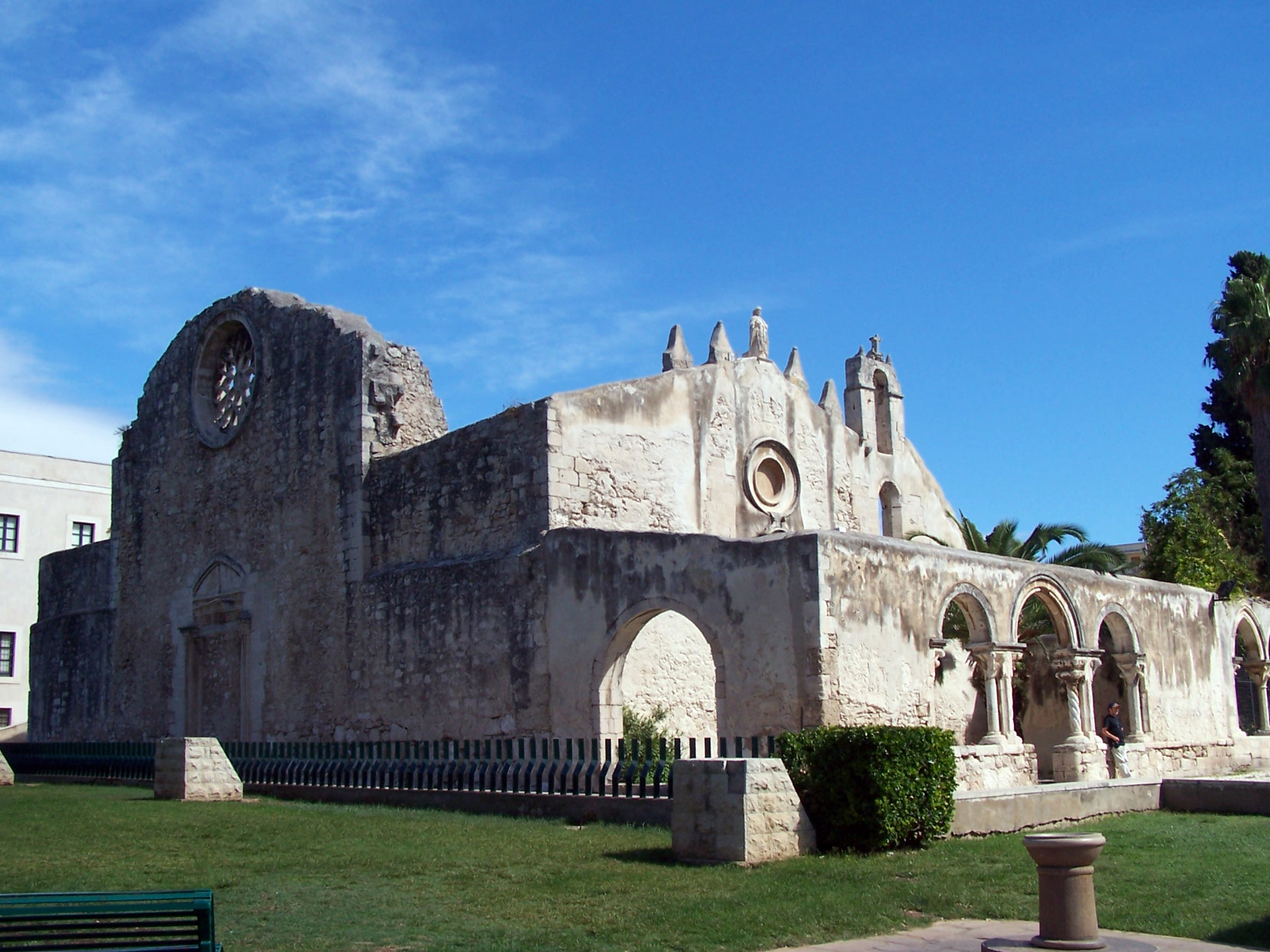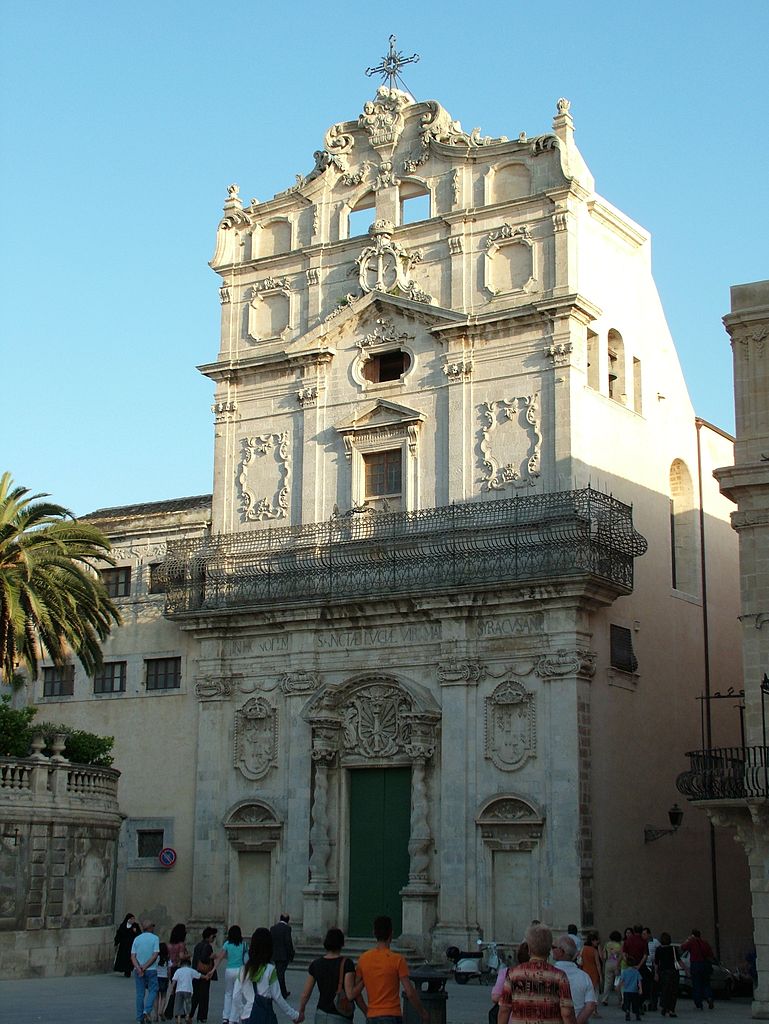Former Borbonic prison of Ortigia
The former Borbonic Prison is located in Ortigia, in the old town centre of Siracusa, in the area of the present Via Vittorio Veneto, at the market level.
Today the structure is in disuse and in total state of abandonment and degradation, and for more than twenty years there has been talk of its possible restoration and reuse.
BACKGROUND HISTORY
The need for a new prison began to be perceived during the last years of the Borbonic regime, which were particularly dark for the city of Syracuse and its inhabitants.
Cases of violence and delinquency increased more and more, due to a very difficult economic and social condition, aggravated by a persistent epidemia di colera that hit the city in 1837.
In the 1830s, doctors were completely unprepared to stem and combat an epidemic of such magnitude, the spread of which was favoured by lack of hygiene, poor nutrition and unhealthy dwellings.
The reactions of the inhabitants were often irrational and caused by panic, leading to open hostility towards the representatives of the order, the wealthy and the nobles, and a lack of confidence in doctors and health facilities.
The consequence of this situation was a considerable depopulation of the city and obviously the onset of a widespread anti-Bourbon feeling, fed by a social resentment long repressed. This resentment was fully reflected in the rebellions that in those years were upsetting Europe and Sicily in particular.
The revolutionary uprisings against the Bourbon domination began in the city of Palermo, but soon also involved the smaller cities, including Syracuse. However, Rivoluzione Siciliana del 1848 failed after almost a year and the Bourbon army of King Ferdinand II regained its dominion over the whole island. Syracuse was forced to surrender and from the end of 1849 martial law was declared and order was re-established through a strict punitive policy.
The repression carried out by the Bourbon government led to an increase in arrests, which often took place for inconsistent reasons, pretexts to punish any form of rebellion.
THE PROJECT
From the beginning of the nineteenth century, with the intensification of revolutionary uprisings and with the increase in cases of crime, began to fill the existing prisons of the Castello Maniace
and the Central Prison, located in the basement of Casa Cadorna in Piazza San Giuseppe.
Initially, in 1827, the engineer Innocenzo Alì was commissioned to build a new prison. However, the execution of the works was slowed down by the social turbulence that followed one another in those years, by the cholera epidemic that hit the city and by the consequent economic and social recession.
The Sicilian Revolution of 1848 gave the final push to the need for the new prison and the resumption of work. The project was taken up again and reworked in 1853 by Luigi Spagna, an engineer already well known and in demand, who had worked on the construction of important works and had built numerous buildings in the province.
The area where the prison was to be built had already been identified along the current Via Vittorio Veneto, in the district of Bagnara, later called district Graziella. In the same site, near the small port, there was the fourteenth-century castle Casa Nova destroyed by the earthqake of 1693, also used as a prison.
While respecting the previous model developed by the engineer Innocenzo Alì, the new project of Luigi Spagna differs in some features: a plan was added, compared to the two floors previously planned, and the idea of a moat around the central structure was abandoned.
The difficulty that was encountered during the construction of the new prison was mainly the demolition of the district of Bagnara that housed it: the existing houses in the area were demolished and the material that was able to recover was reused for the construction of the prison structure. The work was carried out for about seven years.
THE STRUCTURE
Luigi Spagna’s project was particularly modern for its time. The structure is set on a rectangular plan externally and octagonally internally, developed around a central courtyard, from which it was possible to have an overview of all the wings of the complex.
This architectural project followed a construction method very popular at that time: the Panopticon,
A CASA CU N’OCCHIU
In the entrance arch of the prison is carved an eye in relief that helped to increase the left air of the building. This sculptural detail has determined the name of “A Casa cu n’Occhiu” among the aretusei.
There is no explanation for interpreting this symbol, but only suppositions. It could represent the eye of justice, since initially the structure was also the seat of the Tribunal, or the eye of the prisoners, who through the cracks in the grilles yearned for freedom, or perhaps it could be traced back to the same “panoptic” structure of the building.
Moreover, the prison was one of the obligatory stops of the Eighth Santa Lucia (a procession in honour of the patron saint of the city). The Patroness was greeted by prisoners, who lit a candle, and the youngest brought her a bouquet of flowers.
PRISON LIFE
The life of the Bourbon Prison lasted 135 years and there are many stories that gravitate around it.
Prison security was handled by 15 guards, first or second class or pupils. The latter were often former soldiers who did not follow any kind of training, and therefore were not very experienced.
Until the end of the nineteenth century the prison did not host particularly serious crimes, except sporadic episodes. The major disturbances came from the ease the prisoners had in communicating with the outside world, causing the fear of possible jailbreaks and compromising the security of the facility.
With a few exceptions, the prisoners did not have to serve long sentences, which at most could last for a year. Medical examinations were frequent and all clothing was made available to deal with the winter cold.
Each detainee was entitled to a minimum of one and a maximum of two weekly visits. Those who showed good behaviour could follow education courses to learn to read and write, so that they could start a new life once they left. The convicts worked inside the prison, particularly we know that they made straw hats.
Despite prejudices and clichés, and thanks to recent studies on the subject, we now know that the Bourbon prison system in Sicily was among the least inhumane in Europe.
The Bourbons initiated the first prison reform that took into account the humanity and basic needs of the prisoner, health, religious and work, assuming that detention should also be re-education and redemption.
Bourbon reformist policies were influenced both by the values of equality propagated by the French Revolution and by the English presence in Sicily during the Napoleonic conquest of Italy. In particular as regards the theories relating to prison reform, which in England had its leader in Bentham.
The Panopticon gave guidelines not only on the architectural structure of prisons, but also on the principles to follow. Its circular prison was equipped with individual cells clearly visible at a glance from a single fixed point, in which the prisoners worked in complete isolation to be able to repent and redeem themselves, pursuing a common objective of social utility.
The project was not inspired by humanitarian ideals, but utilitarian, yet fascinated most architects of the time and was welcomed and revisited by the most enlightened rulers.
The Bourbon kings distinguished themselves among the European sovereigns, showing a more modern vision than the English rulers themselves, who simply approved the projects of the reformers without putting them into practice.
In such a political and cultural climate, the Bourbons issued a decree on prison legislation at the forefront of the times. The decree provided first of all for the establishment of a commission that would oversee the individual structures to check the proper functioning of the internal, the safety of the premises, hygiene and quality of food for prisoners. It contained rules on the granting of contracts for the cleaning, washing of linen and health care facilities used to care for the sick. It also established the education of prisoners and their work commitment, so that they could devote themselves to the construction of factories within the same penitentiary.
The rules of the decree were never fully implemented, but the Bourbon regime proved to be particularly advanced in the construction of one of the most modern prisons that was based on the architectural criteria of Bentham, the Ucciardone Prison in Palermo, inaugurated in 1840.
THE EARTHQUAKE OF 1990
In 1985 it was one of the scenarios of the Sigonella Crisis, an important episode in Italian politics and diplomacy. The four Palestinian terrorists who hijacked the cruise ship Achille Lauro to demand the release of about 50 Palestinian detainees in Israel were detained at the Bourbon Prison in Syracuse.
The prison was shut down in 1991, after 135 years of activity, following the earthquake of 13 December 1990, which caused serious damage to the structure.
The stories of those who were locked up in the prison were terrible, because the fear was greater due to the impossibility of escaping. No one could leave the complex, neither the prisoners nor the surveillance staff. For this reason all the prisoners were gathered in the central courtyard, trying in this way to protect them from possible falls of the structure.
The logistical difficulties and the impossibility of maintaining a high level of security led to the escape of some prisoners, who took advantage of the situation.
Following its closure, a new prison was born in the district of Cavadonna and for more than 20 years there has been a debate on how to restore and reuse the former Bourbon Prison.
THE PRISON IS NOT ACCESSIBLE, BUT IT CAN BE ADMIRED FROM THE OUTSIDE.
Località: Via Vittorio Veneto, 227– Isola di Ortigia – Siracusa



